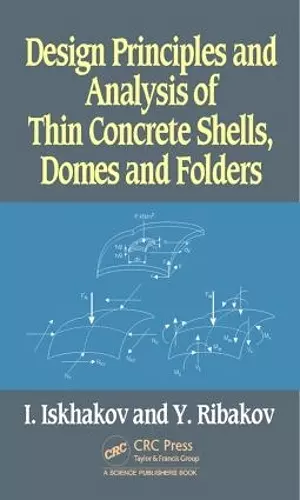Design Principles and Analysis of Thin Concrete Shells, Domes and Folders
Yuri Ribakov author Iakov Iskhakov author
Format:Hardback
Publisher:Taylor & Francis Inc
Published:16th Nov '15
Currently unavailable, and unfortunately no date known when it will be back
This hardback is available in another edition too:
- Paperback£63.99(9780367377212)

One of the main goals of a good and effective structural design is to decrease, as far as possible, the self-weight of structures, because they must carry the service load. This is especially important for reinforced concrete (RC) structures, as the self-weight of the material is substantial. For RC structures it is furthermore important that the whole structure or most of the structural elements are under compression with small eccentricities. Continuous spatial concrete structures satisfy the above-mentioned requirements. It is shown in this book that a span of a spatial structure is practically independent of its thickness and is a function of its geometry. It is also important to define which structure can be called a spatial one. Such a definition is given in the book and based on this definition, five types of spatial concrete structures were selected: translation shells with positive Gaussian curvature, long convex cylindrical shells, hyperbolic paraboloid shells, domes, and long folders. To demonstrate the complex research, results of experimental, analytical, and numerical evaluation of a real RC dome are presented and discussed. The book is suitable for structural engineers, students, researchers and faculty members at universities.
ISBN: 9781498726641
Dimensions: unknown
Weight: 498g
182 pages